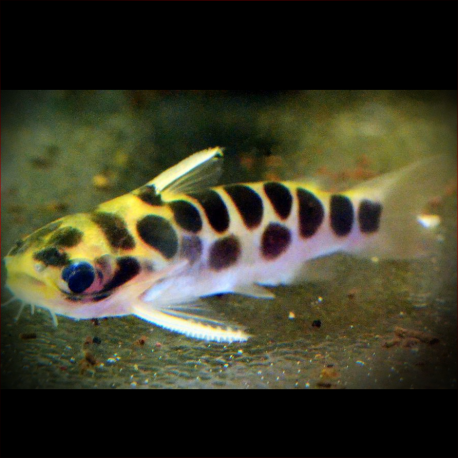More info
Datasheet
| Minimum Tank Size | 40 litres / 10.57 US gallons |
| Maximum Size | 6.0cm / 2.36inches |
| Temperature | 24°C / 75.20°F - 30°C / 86.00°F |
| Hardness | 1-25ºdH |
| pH | 4.9-8.0 |
General Description
The Oil Catfish, scientifically known as Centromochlus Perugiae, is a small catfish species that is a delight to observe when kept in optimal conditions. Originally categorized in 1998 under the genus Centromochlus, this species is often underappreciated in the aquarium trade due to its rarity in suitable environments. With a maximum size of 6.0cm, it thrives in aquarium setups that mimic its natural habitat in South American biotopes, showcasing endearing behavior and feeding habits that make it a charming addition to community tanks.
Aquarium Setup
For an ideal aquarium setup for the Oil Catfish, a minimum tank size of 40 litres is recommended. The tank should reflect a South American biotope with ample hiding spots among bogwood or plastic piping to accommodate the fish's daytime behavior of squeezing into small spaces. A sand substrate is preferred, and while a good water flow is beneficial, it is not mandatory. Providing a red lightbulb allows for nighttime observation as these nocturnal feeders emerge to consume live and frozen foods such as bloodworms, earthworms, and sinking dried foods.
Behaviour
Known for its peaceful demeanor, the Oil Catfish is compatible with a variety of tankmates, except for very small fry. This species demonstrates no aggression towards conspecifics and can be kept either alone or in a group. They are particularly active near the water's surface, displaying frantic swimming behavior in the flow, which enhances their appeal to aquarium enthusiasts.
Feeding and Diet
In the wild, the Oil Catfish is insectivorous; however, in captivity, they eagerly consume live and frozen foods like bloodworms and earthworms, as well as sinking dried foods. Feeding them after lights out ensures they receive their share of food, but caution must be taken not to overfeed these voracious eaters.
Reproduction & Dimorphism
Breeding the Oil Catfish is feasible under specific conditions. They require a tank with moderate to strong water flow and numerous small crevices for egg laying. The fertilization process is internal, facilitated by the modified anal fin of the male. Females, distinguishable by their rounder shape when gravid, guard the eggs until hatching. To safeguard the fry from predation, they are usually moved to a separate tank post-hatching and fed microworm or brine shrimp nauplii after depleting their yolk sacs.
Habitat and Distribution
Native to habitats in Peru and Ecuador, the Oil Catfish prefers swift-flowing river sections devoid of aquatic vegetation with a sandy substrate. Their natural environment lacks plant cover, making them adept at seeking refuge among the shoreline areas. It is crucial to replicate these habitat characteristics as closely as possible when setting up an aquarium for this species.

